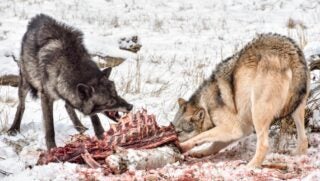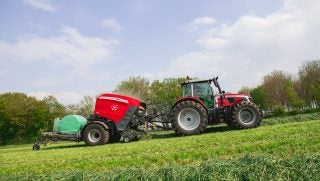For all of the advances in the U.S., it still is one of the only major beef-producing countries to not have a nationwide traceability program
Traceability is a multifaceted, long-standing conversation in the beef industry. Cost, data ownership, privacy, and general logistics are just some of the factors that have caused the U.S. to be one of the only large beef-producing countries to not have a nationwide traceability program. The U.S. prides itself in producing the safest beef in the world, but that doesn’t mean that a disease outbreak couldn’t happen. The coronavirus pandemic is the human equivalent of a worst-case scenario for the beef industry — rapid spread, difficulty tracking, and closed borders could wreck the U.S. export market and cause consumers to lose even more trust in the industry.
U.S. CattleTrace Inc., is a private organization, formed in 2018. In January of 2020, multiple cattlemen’s groups — including the Kansas Livestock Association, Florida Cattlemen’s Association, and the Southwestern Cattle Raisers Association — teamed up with the organization. The goal of the non-for-profit corporation is to develop a disease traceability system and infrastructure that could effectively handle a disease outbreak. U.S. CattleTrace just finished up its pilot program and is promoting its system through education and by encouraging industry stakeholders to advocate for traceability measures.
Callahan Grund is executive director of U.S. CattleTrace. He explained that after completing the pilot program, his organization began working on expanding the program across every sector of the beef industry, and throughout different regions of the country.
“The goal of the pilot project was to see if a nationally significant cattle traceability system would be economically feasible within the U.S.,” he said.

The hesitance to adopt a traceability program in the U.S. frustrates some cattle producers, and makes sense to others. In 2019, the USDA announced that Radio Frequency Identification (RFID) Tags, would be required in all sexually intact cattle being sold or moved interstate. Metal bangs tags were to be phased out by 2023, but the USDA reversed course and removed the announcement and fact sheet from its site that fall. Groups, including R-CALF USA, filed a lawsuit, citing the potential profit of tag manufacturing companies and a number of other factors. Cattle producers, like many American citizens, are very concerned about sharing data, and want to be assured that their information would only be used if necessary.
The issue can be politically charged, but for U.S. CattleTrace, Grund explained that the goal is to protect the future of the beef industry, and to be prepared if a disease emerges, like Foot-and-mouth disease. Projections show that the U.S. export market will only continue to grow into the future. “If we look at how independent and segmented we are — which are fantastic things in many ways — the unfortunate part of that is when there is a disease outbreak, we have no way to track it,” he said.

So how does the U.S. CattleTrace system work? As the name suggests, RFID tags transmit specified data to receivers. The tags are triggered by an electromagnetic interrogation pulse from a nearby RFID reader, and the specified data is transmitted digitally back to the reader. This technology is commonly used when running inventory on goods. U.S. CattleTrace RFID readers are set up to collect the animal ID, date, time, and location, and would be placed at important sites, like auction yards. For example, if animal A is diagnosed with a contagious disease at location C, say a feedyard, the animal’s unique ID could be pulled from the database so health officials could work back and see what location A and B were, and formulate a plan to isolate and mitigate the disease risk.
Grund explained that the goal is to implement the technology across all sectors of the industry, but that feeder cattle are the largest concern due how much they travel, and also because these animals are the closest to the actual food supply chain.
Getting cow-calf producers, feeders, livestock auctions, and other sectors of the industry to buy into the program is something Grund works on daily. There is no direct economic benefit to purchasing and implementing RFID tags, which are more expensive than regular ear tags, but Grund explained that there can be additional benefits to utilizing the technology — some producers also use the tags to collect feed intake data, collect weights, and much more.
The removal of the government from the program is another benefit Grund points to. While cooperation with government programs would be necessary, the daily management falls in the hands of people like Grund, who also make their living in the beef industry. “We want this to be built for producers, by producers, and run by producers,” he said.
Lilly Platts lives in Montana, where she is an editor at the American Simmental Association and writes freelance pieces for a number of ag publications.



